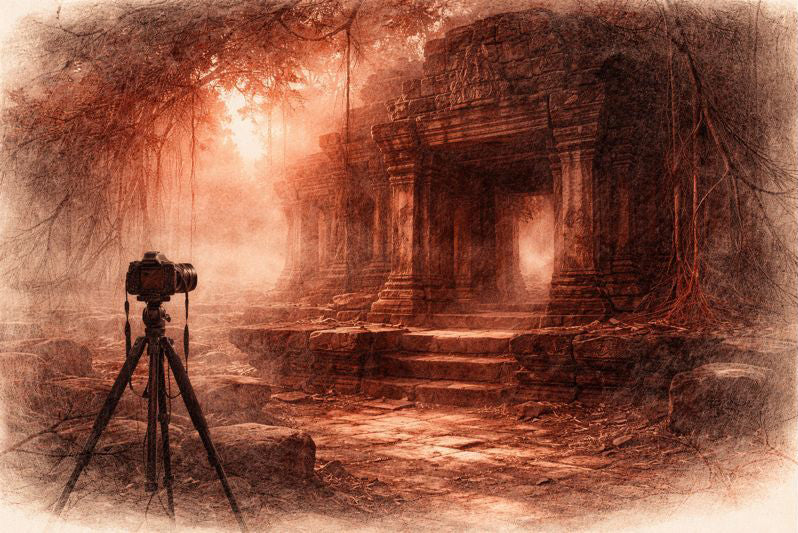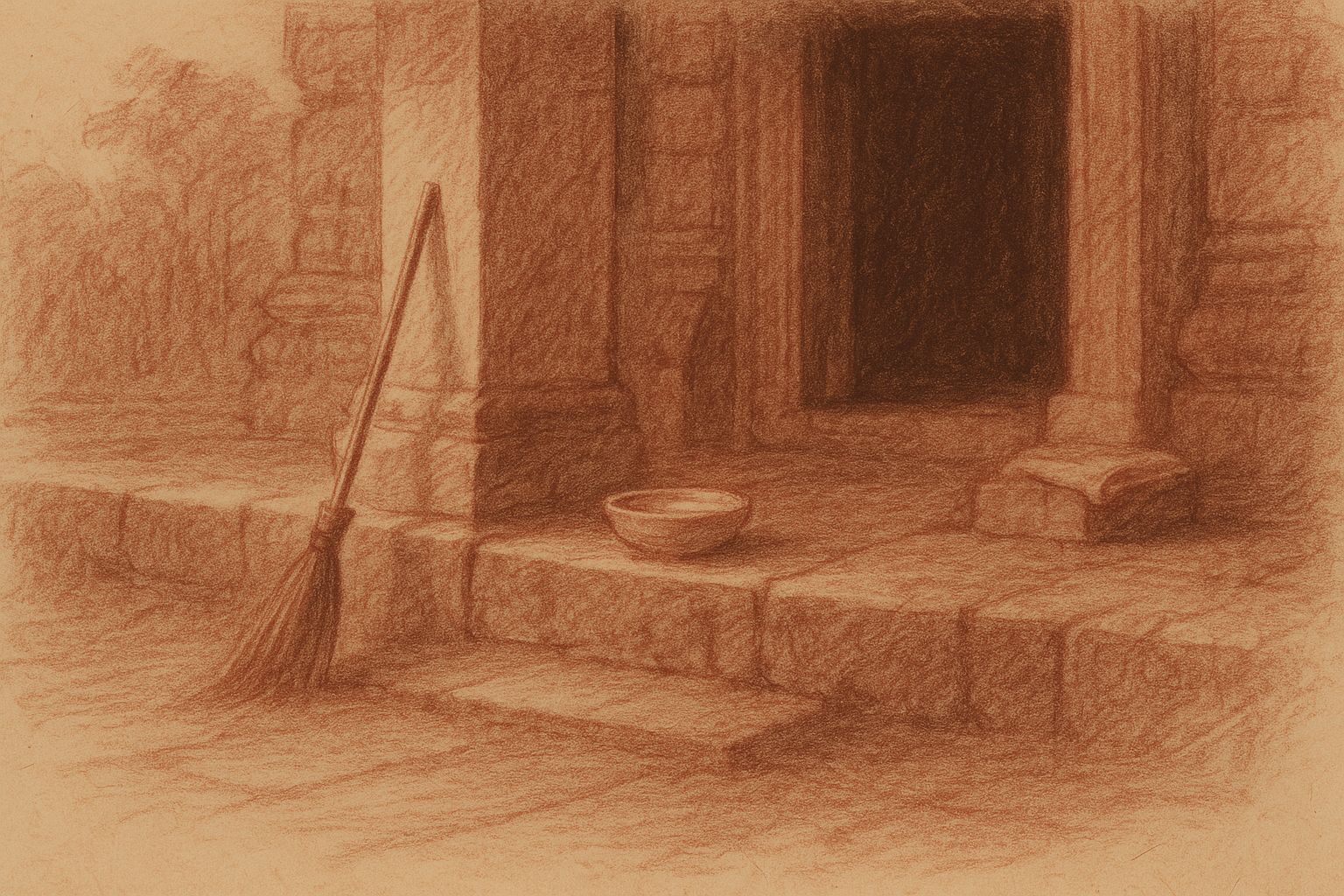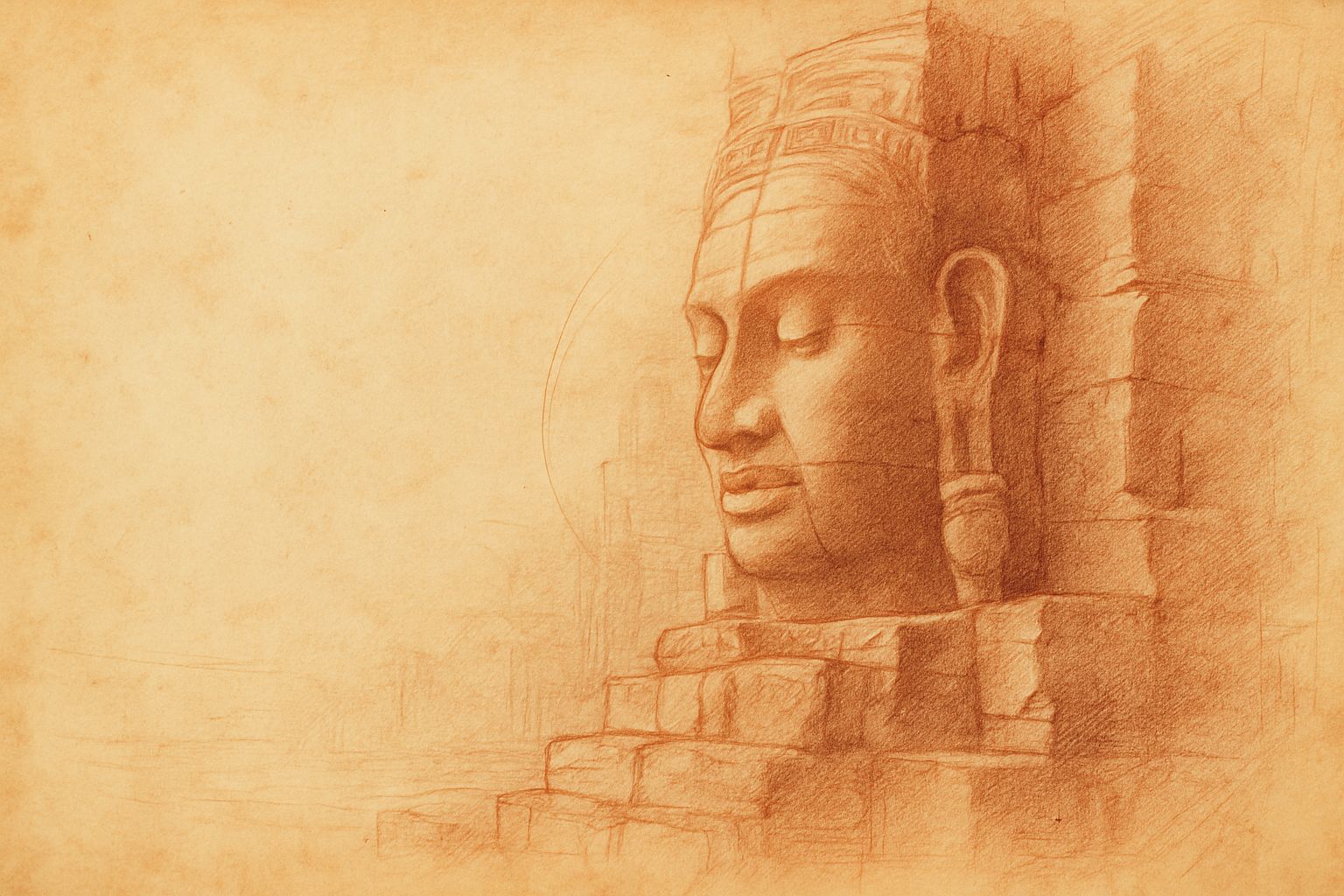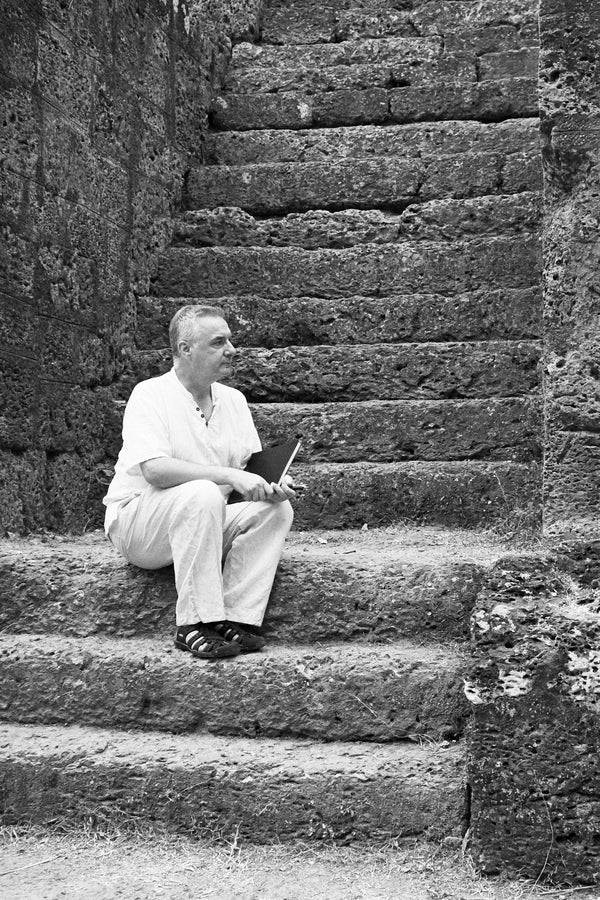Complimentary worldwide shipping on orders over $400 · No import tariffs for most countries
Complimentary worldwide shipping on orders over $400 · No import tariffs for most countries

The Goddess Who Twisted Her Hair
On Preah Thorani and the Earth Witness Mudra
Then, with one hand, he touched the earth—
and the earth rose up to speak.
It is Khmer New Year in Siem Reap. The streets shimmer with bright cloth and song, the air alive with waterplay and laughter, and the temples gleam beneath garlands of stars. Everywhere, light moves in celebration. But within it all, beyond the music and delight, I feel the pull of something older—quieter than festival, deeper than fire.
Yesterday, Annie and I stood once more within the galleries of Angkor Wat, beneath monsoon-brushed skies, with our dear friend Doriane. We had come to witness the Buong Suong ceremony—a sacred offering to ancestral spirits and celestial beings, steeped in smoke, gesture, and golden silence. Amid the crowd and rustling incense, Doriane turned to me and asked, “Who is the lady holding her hair?”
She meant, of course, Preah Thorani—the earth goddess of Southeast Asian Buddhist tradition, beloved in Khmer iconography and often depicted in a gesture of exquisite tenderness: wringing the water from her long, dark hair.
To answer her, I began as I often do—with a story that the stones themselves remember.
Long ago, beneath the shelter of the Bodhi tree, the bodhisattva Siddhartha Gautama sat in stillness on the edge of awakening. Mara—the lord of illusion, desire, and death—rose against him, fearing the end of his dominion. He summoned his legions, a howling host of demon forms, weapons, wind, and shadow. The sky darkened. The earth shook. Mara’s army hurled itself upon the one who did not move.
In some tellings, it is said: They came like a swollen river breaching its banks. But Gautama, unmoved, sat in silence.
Defeated by serenity, Mara turned to accusation. “Who will witness your right to sit at the centre of the world?” he cried. “Who will testify to your merit, your countless lives of sacrifice and vow?”
And in answer, Gautama reached down with his right hand and touched the earth.
This is the bhumisparsa mudra—the earth-touching gesture. It is the moment when the world itself becomes witness.
The Buddha lowered his hand,
and the mountains bowed beneath it.
A goddess rose from the roots of time.
She is called Preah Thorani in Khmer, Dharani in Sanskrit. She is the living Earth, the sentient ground of being. From her coiled black hair, she wrung a flood—pure, cool, and vast. The waters flowed from the merit of the Buddha’s past lives—each act of compassion, each vow held through aeons. And it was enough.
Mara’s armies were washed away.

Preah Thorani, Ta Prohm Temple, Angkor, Cambodia
This beautiful lintel on the eastern gopura IV of Ta Prohm shows Preah Thorani wringing her hair and drowning two mounted warriors. Above her, the defaced Buddha sits in perfect serenity—his enlightenment realised.
The stones of Angkor remember the tale more vividly than any text. In the sacred panels of Ta Prohm—especially at the eastern gopura IV—we find one of the most tender and layered expressions of this moment. The composition moves not linearly, but as a dream: multiple events carved into one frame, like the simultaneity of spirit and world.

The Assault of Mara, Ta Prohm Temple, Angkor, Cambodia
This monumental panel shows Mara’s assault in its full fury. Below, the Buddha is ringed by snarling soldiers. Above, Preah Thorani emerges with calm grace, wringing her hair. And above her again, the Buddha—defaced, but unshaken—sits triumphant.

Preah Thorani, Ta Prohm Temple, Angkor, Cambodia
A closer view from the same panel reveals the quiet intimacy of the gesture: a single twist of the hair, and the flood of truth begins.
—
What moves me most is that her power is not shouted. It is not summoned with wrath or roar. It is released through presence. A single, fluid motion—wringing the hair that has touched root, river, and time. It is a gesture of sacred conviction. When truth flows through the body of the world, no sword is needed.
Her appearance in Angkorian art seems to be a Khmer offering. In Indian traditions, Thorani appears only in the sacred texts—unseen in stone. But here, from the mid-twelfth century onward, she emerges as form and feeling, a distinctly Cambodian embodiment of the feminine divine. Born of earth and river, she is the sanctified witness to awakening.
She reminds us that the Earth is not inert ground but a breathing presence. She remembers. She listens. She rises.
There is more to this story. Mara, undone by truth, turned to temptation. He sent his three daughters—graceful, luminous embodiments of desire—to seduce the Buddha and reclaim dominion. But that tale awaits another carving, another gallery. For now, we remain in the moment of flood and flame—the moment of stillness after storm.
Wringing her dark hair,
she poured the truth of the world—
and washed death away.
And so I answered Doriane’s question. Not fully—for no one ever truly explains a goddess. But perhaps I gave her a glimpse. Perhaps I gave her a name to carry in the hush of the galleries.
Even now, as we walk again beneath the festival lights of Siem Reap, amidst laughter, music, and the scent of wet jasmine, I carry that image with me: the Earth bearing witness, and the gentle flood of truth sweeping falsehood away.
Let us remember that even silence leaves a trace,
and even stone remembers the flood.
Also in Library

Before the Shutter Falls
3 min read
Before the shutter falls, fear sharpens and doubt measures the cost of waiting. In the quiet hours before dawn, the act of not-yet-beginning becomes a discipline of attention. This essay reflects on patience, restraint, and the quiet mercy that arrives when outcome loosens its hold.

Those Who Keep the Way Open — On the Quiet Guardians of Angkor’s Thresholds
3 min read
Quiet gestures shape the way into Angkor — a swept stone, a refilled bowl, a hand steadying a guardian lion. This essay reflects on the unseen custodians whose daily care keeps the thresholds open, revealing how sacredness endures not through stone alone, but through those who tend its meaning.

Multiplicity and Mercy — The Face Towers of Jayavarman VII
5 min read
A new vision of kingship rises at the Bayon: serene faces turned to every horizon, shaping a world where authority is expressed as care. Moving through the terraces, one enters a field of steady, compassionate presence — a landscape where stone, light, and time teach through quiet attention.
Join My Studio Journal
Receive occasional letters from my studio in Siem Reap—offering a glimpse into my creative process, early access to new fine art prints, field notes from the temples of Angkor, exhibition announcements, and reflections on beauty, impermanence, and the spirit of place.
No noise. No clutter. Just quiet inspiration, delivered gently.
Subscribe and stay connected to the unfolding story.

Join My Studio Journal
Receive occasional letters from my studio in Siem Reap—offering a glimpse into my creative process, early access to new fine art prints, field notes from the temples of Angkor, exhibition announcements, and reflections on beauty, impermanence, and the spirit of place.
No noise. No clutter. Just quiet inspiration, delivered gently.
Subscribe and stay connected to the unfolding story.
